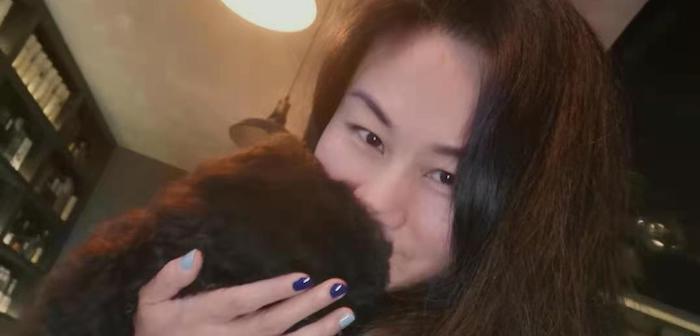Thursday we did a short biography of Chen Shu who helped create an iconic traditional Chinese art form, and today we want to feature a modern Chinese artist who just might change art history again.
Mier Tang is a force of nature. She is young, ambitious, and looks to advance Chinese animation to give it the global recognition it deserves.
A graduate of The Academy of Arts and Design, Tsinghua University here in Beijing, and the prestigious Academy of Art University in San Francisco, she holds both a BFA and MFA, has worked for multiple international publishing houses, created and produced countless animation projects, started Floating World Animation in 2015 and is now giving back by helping to educate and inspire the next generation of Chinese animators.
Her business partner Dalton Grant told us “[Tang] is pretty innovative because she has a different way of thinking about the markets. She intrinsically knows how to identify flaws in logic while having a passion for finding solutions…Her ability to remain flexible makes her an awesome partner in an ever-changing market, in the Chinese animation community and the international world of animation in general.”
Despite being young they have garnered several awards for their work including such high-profile festivals as The Comic-Con International Independent Film Festival and EXPOTOONS International Animation Festival. And they have already signed a deal with Tencent for upcoming projects.
I sat down with this modern artist and businesswoman to find out what’s new and what’s next in the world of animation.
Jingkids (JK): Everyone’s passion gets ignited somewhere. What got you interested in Animation?
Mier Tang (MT): I started to get really interested when I was in college. There was “The Art of the Film” as an elective course that really sparked my interest. My college major was Visual Design, but I was more towards graphic design. Out of all the classes in school, my favorite was “film and illustration”.
In the last two years of college, I started some freelance work as an illustrator for magazines, publishing houses, and advertising companies where I got to use visual imagery to tell stories in different ways. And my boyfriend at the time is one of the most talented concept artists I’ve met. He was recommended for post-graduate work in Animation but his teachers had never worked on animation productions before, so he pretty much taught himself through school and I was learning with him at the same time.
JK: So basically, you two had to self-teach even at the college level? That’s amazing. Is that part of why you are starting on this new project to help educate the next generation of animators?
MT: Yes! The industry changes so fast. It’s hard for students to have access to the most recent technology and techniques. We are working with college students to give them internships and practical hands-on experience learning from current artists and filmmakers, so they can have the most recent industry knowledge, access to the newest technology, and build their resumes before they even enter the workforce.
We are hoping to expand programs to middle and high school students soon with a focus on basic animation and storytelling skills.
JK: Speaking of being a kid, what did you watch growing up and what kind of content do you want to create for modern children and families now?
MT: We didn’t have a lot of Chinese animation options when I grew up. Most were foreign shows like Transformers, Tom and Jerry, The Smurfs, Lulu. But there are a couple of Chinese animation shows like Black Cat Sheriff.
The content we want to create for kids needs to be fun and inspirational. We want it to deal with things like problem-solving, open-mindedness, and creativity.
JK: You certainly have the talent pool to do that. You have an international team of incredibly well-respected animators, directors, and writers so you could have chosen anywhere in the world as home base. Why set up your studio in China?
MT: That was actually part of my intention when I went to the US for my master’s degree. My college was a top art school in China, there were many talented artists around me, but the Chinese animation industry was in a very chaotic stage; there are big blank spaces in Chinese animation. It started in the 1920s, there was great animation created in the 1940s and the 70s/80s but after the 1990s there weren’t any animated movies or TV shows that stand out. I didn’t understand why all these great talents were here but weren’t producing good projects. So, I want to use what I learned from the US and help Chinese animation to grow. The Chinese market has grown so fast and has huge needs in the entertainment industry. There are good opportunities to build something we believe in in this market.
JK: What do you see as the future of animation? What is next for this art form?
MT: Technology is rapidly developing; Creating Animation could be easier in the future. Right now animation production is very expensive and time-consuming and a big team effort. But in the future, there could be some tools people can easily use to tell their stories in an animation format. No need for big production budgets or lifetime training.
We are currently developing an idea that can use AI technology to simplify some of the processes. This is just a very early-stage idea, I can’t get into a lot of detail at the moment, but we are excited about that. It’s going to require some innovative tech people to pull it off.
KEEP READING: Not “Just Playing”: Your Child’s Brain On Creative Arts
 Images: Mier Tang
Images: Mier Tang




